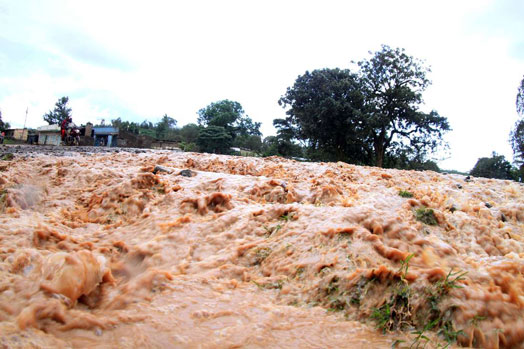
Floods are the most common and widespread weather-related natural disaster, posing a threat to communities across the United States and around the world. Whether caused by heavy rains, coastal storms, dam failures, or rapid snowmelt, floods can have devastating consequences, from damage to property and infrastructure to loss of life.
Understanding the different types of floods, the areas at risk, and the steps individuals and communities can take to prepare and respond is crucial for mitigating the impacts of these events. In this blog post, we’ll dive into the key insights from recent research and expert analysis to help you better understand and prepare for floods.
The Dangers of Floods
Floods can take many forms, from the slow-rising waters of a river overflowing its banks to the sudden, powerful surges of a flash flood.2While all floods pose significant risks, flash floods are widely considered the most dangerous, combining the destructive power of flooding with incredible speed.3Flash floods can occur within minutes of heavy rainfall, leaving little time for warning and evacuation.3They are often triggered by factors like impervious surfaces in densely populated areas, underground storm drains, and rapid runoff in mountainous regions.3Dam failures can also cause sudden, catastrophic flash floods downstream.3
Regardless of the type, floods can have devastating consequences. They can cause power outages, disrupt transportation, damage buildings, and even trigger landslides.2And the risks don’t end when the floodwaters recede – contaminated water, mold, and debris can pose ongoing hazards during the recovery process.2
Assessing Flood Risks
Floods can happen anywhere that receives rainfall, and every U.S. state and territory is at risk.3 However, some areas are more prone to flooding than others, and understanding the specific risks in your community is crucial for preparedness.Densely populated areas are at a high risk for flash floods, as the construction of buildings, roads, and other impervious surfaces can increase runoff and overwhelm drainage systems.3Areas near rivers and streams, especially those with levees or dams, are also particularly vulnerable to flooding.3Mountainous regions and areas with steep terrain can experience rapid runoff and flash flooding, even in the absence of nearby waterways.3And in the western United States, canyons, dry arroyos, and other seemingly innocuous landscapes can become dangerous flood zones during intense rainfall events.3To understand the specific flood risks in your area, the Federal Emergency Management Agency (FEMA) recommends visiting its Flood Map Service Center to assess the types of flood hazards in your community.2 Signing up for local emergency alerts and staying informed about weather conditions can also help you stay prepared.
Preparing for Floods
Preparing for a flood event can help minimize the risks and ensure your family’s safety. The first step is to develop a comprehensive emergency plan that includes evacuation routes, shelter locations, and a checklist of essential supplies.2Investing in flood insurance is also crucial, as standard homeowner’s policies typically do not cover flood damage.2 The National Flood Insurance Program (NFIP) provides affordable coverage options for both homeowners and renters.
Beyond the basics, there are several additional steps you can take to protect your property and improve your flood resilience. These include:
- Elevating critical appliances and utilities (e.g., electrical panels, water heaters) to higher floors or above predicted flood levels2
- Installing check valves to prevent floodwater from backing up into your home’s drains2
- Considering a sump pump with a battery backup to remove water from your home’s foundation2
- Decluttering gutters and downspouts to ensure proper drainage2
- Securing important documents in a waterproof container and creating digital backups2
By taking these proactive measures, you can help safeguard your home and your family in the event of a flood.
Staying Safe During a Flood
When a flood event is imminent, it’s critical to heed all warnings and follow the instructions of local authorities.2 This may include evacuating the area if told to do so, or sheltering in place if you cannot safely leave. One of the most important safety guidelines is to never attempt to walk, swim, or drive through floodwaters.2Even shallow, slow-moving water can be dangerous, as it can sweep away vehicles and people.2It’s also crucial to stay off bridges over fast-moving water, as they can be washed away without warning.2
If you become trapped in a building or a car during a flood, there are specific actions you should take to increase your chances of survival. For example, if trapped in a building, you should get to the highest level and signal for help, but avoid climbing into a closed attic to avoid becoming trapped by rising waters.2If trapped in a car, stay inside the vehicle and get on the roof if the water is rising.2Throughout the flood event, pay close attention to emergency alerts and instructions from local authorities.2 Following their guidance can help you and your family stay safe until the danger has passed.
Recovering from a Flood
Even after the floodwaters have receded, the recovery process can be long and challenging. It’s important to continue heeding the advice of local officials and emergency responders, as there may still be hazards like contaminated water, mold, and debris that pose risks to your health and safety.2When returning to your home or business, wear appropriate personal protective equipment, such as heavy work gloves, boots, and face coverings.2Be aware of the potential for electrical hazards and avoid wading in floodwater, as it may be contaminated or charged with electricity from downed power lines.2
The financial impact of a flood can also be significant, with damage to homes, businesses, and infrastructure often costing thousands or even millions of dollars to repair. Filing a flood insurance claim can help ease the financial burden, but the process can be complex and time-consuming.2
Throughout the recovery process, it’s important to prioritize your physical and mental well-being. Seek medical attention if you or a family member experiences any flood-related illnesses or injuries, and don’t hesitate to reach out for emotional support if you’re feeling overwhelmed.
Conclusion
Floods are a serious and pervasive threat, but with the right knowledge and preparation, individuals and communities can take steps to mitigate the risks and improve their resilience. By understanding the different types of floods, assessing the specific risks in your area, and taking proactive measures to prepare and respond, you can help keep your family safe and minimize the impact of these devastating events.
Remember, the key to flood preparedness is to stay informed, have a plan, and be ready to act quickly when necessary. By taking these steps, you can help ensure your family’s safety and contribute to the broader effort to build more flood-resilient communities.













